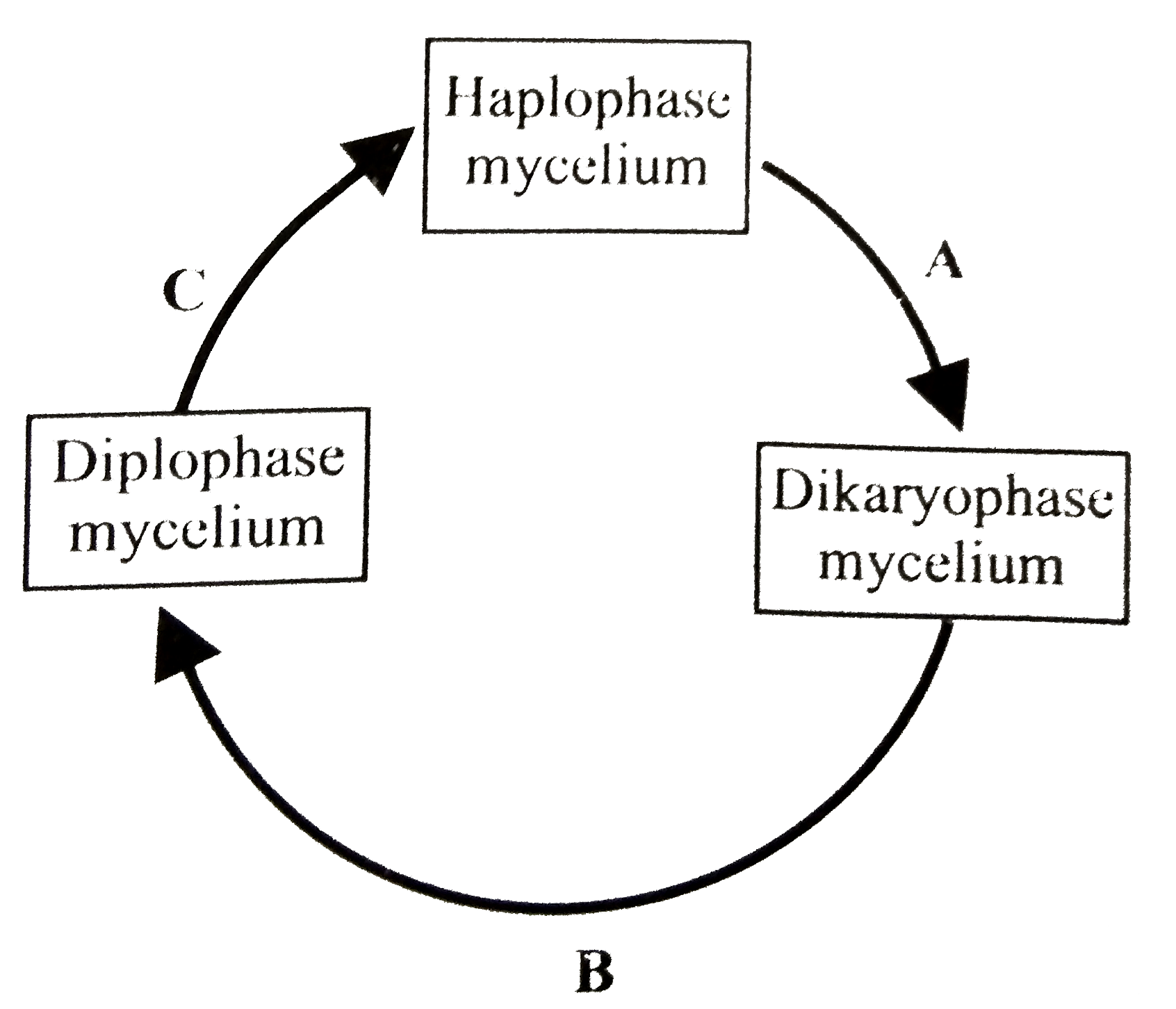A stage peculiar to ascomycetes and basidiomycetes is
Dikaryophase
Diplophase
Haplophase
Uridinial stage
The correct Answer is:A
Step-by-Step Solution:
1. Understanding the Question: The question asks for a stage that is peculiar to the Ascomycetes and Basidiomycetes, which are two phyla within the kingdom Fungi.
2. Identifying the Phyla:
- Ascomycetes (sac fungi) and Basidiomycetes (club fungi) are both significant groups of fungi known for their reproductive structures.
- They share a unique reproductive phase that is not found in other fungi.
3. Recognizing the Unique Stage:
- The unique stage that occurs during the sexual reproduction of Ascomycetes and Basidiomycetes is known as the Dikaryon phase.
- In this phase, two nuclei coexist within a single cell, which is a defining characteristic of these fungi.
4. Analyzing the Options:
- Dicariophage: This term refers to the dikaryotic stage, which is indeed the correct answer.
- Diplophage: This refers to a diploid phase, which is not specific to Ascomycetes and Basidiomycetes.
- Haplophage: This refers to a haploid phase, which is also not specific to these fungi.
- Uridinophage: This stage is specific to the rust fungus Puccinia and does not pertain to Ascomycetes or Basidiomycetes.
5. Conclusion: Based on the analysis, the correct answer to the question is Dicariophage, which represents the dikaryotic stage found in Ascomycetes and Basidiomycetes.
Final Answer:
The stage peculiar to Ascomycetes and Basidiomycetes is Dicariophage.
- Ascomycetes (sac fungi) and Basidiomycetes (club fungi) are both significant groups of fungi known for their reproductive structures.
- They share a unique reproductive phase that is not found in other fungi.
- The unique stage that occurs during the sexual reproduction of Ascomycetes and Basidiomycetes is known as the Dikaryon phase.
- In this phase, two nuclei coexist within a single cell, which is a defining characteristic of these fungi.
- Dicariophage: This term refers to the dikaryotic stage, which is indeed the correct answer.
- Diplophage: This refers to a diploid phase, which is not specific to Ascomycetes and Basidiomycetes.
- Haplophage: This refers to a haploid phase, which is also not specific to these fungi.
- Uridinophage: This stage is specific to the rust fungus Puccinia and does not pertain to Ascomycetes or Basidiomycetes.
The stage peculiar to Ascomycetes and Basidiomycetes is Dicariophage.
Topper's Solved these Questions
- KINGDOM FUNGI-MULTICELLULAR DECOMPOSERSBOOK - DINESH PUBLICATION ENGLISHCHAPTER - KINGDOM FUNGI-MULTICELLULAR DECOMPOSERSEXERCISE - RQ
297 Videos
- KINGDOM FUNGI-MULTICELLULAR DECOMPOSERSBOOK - DINESH PUBLICATION ENGLISHCHAPTER - KINGDOM FUNGI-MULTICELLULAR DECOMPOSERSEXERCISE - CYG
19 Videos
- INTRODUCTION BOOK - DINESH PUBLICATION ENGLISHCHAPTER - INTRODUCTION EXERCISE - CYG
10 Videos
- KINGDOM MONERA (THE PROKARYOTES)BOOK - DINESH PUBLICATION ENGLISHCHAPTER - KINGDOM MONERA (THE PROKARYOTES)EXERCISE - CHECK YOUR GRASP
20 Videos
Similar Questions
In the life cycle of ascomycetes and basidomycetes cells are
View SolutionAssertion: In Ascomycetes and Basidiomycetes well distinct Dikaryophase is present during sexual life.
Reason: During sexual reproduction of Ascomycetes and Basidiomycetes plasmogamy is immediately followed by karyogamy.
View Solution
Knowledge Check
Given is the representation of life cycle of members of classes Ascomycetes and Basidiomycetes. Select the correct option for processes A,B and C.
 AABCKaryogamyPlasmogamyMeiosisBABCPlasmogamyKaryogamyMeiosisCABCPlasmogamyMeiosisKarogamyDABCKaryogamyMeiosisPlasmogamy
AABCKaryogamyPlasmogamyMeiosisBABCPlasmogamyKaryogamyMeiosisCABCPlasmogamyMeiosisKarogamyDABCKaryogamyMeiosisPlasmogamyIn which of the following group of fungi biflagellated zoospores are found?
(a) oomycetes
(b) zygomycetes
(c) ascomycetes
(d) basidiomycetesAoomycetesBzygomycetesCascomycetesDbasidiomycetes
Which of the following statements are correct regarding Deuteromycetes?
I. Deuteromycetes are called perfect fungi.
II. Members of Deutermycetes mycetes were often moved to ascomycetes or basidiomycetes once their sexual stages were studied.
III. Large number of (No Suggestions) are decomposers that help in nutrient cycling.
IV. Their mycelium is aseptate and unbranched.
View SolutionThe basidiomycetes includes :-
View SolutionCharactaristic of basidiomycetes is
View Solution[A] : Ascomycetes and basidiomycetes are septate fungi .
[R] : The hyphae are divided by few or many partitions or cross walls .
View SolutionIn some fungi such as……………, the fusion of two haploid cells immediately results in diploid cell while in other group of fungi like …………., an intervening dikaryotic stage occurs, called dikaryophase.
Phycomycetes , Basidiomycetes
Basidiomycetes, Ascomycetes
Ascomycetes, Phycomycetes
Phycomycetes , Deuteromycetes
View SolutionA structure peculiar to Nautilus is
View Solution
